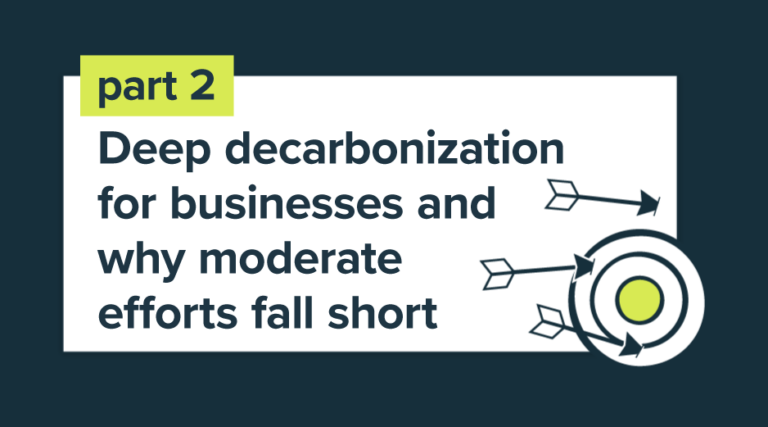 Editor’s Note: Chris Heinz, EnergyCAP’s Vice President for Human Resources, is this week’s blogger. He blogs regularly on topics like workplace engagement, strengths, and coaching at MunyayBlog.com. If you don’t want to miss his blog posts, you can subscribe here.
Editor’s Note: Chris Heinz, EnergyCAP’s Vice President for Human Resources, is this week’s blogger. He blogs regularly on topics like workplace engagement, strengths, and coaching at MunyayBlog.com. If you don’t want to miss his blog posts, you can subscribe here.
Recently the Gallup Organization published its 2017 State of the American Workplace report. Gathering data from more than 195,000 employees and 31 million survey respondents, the report looks at the American workforce. It’s critical reading because it contains critical information about your life.
Did you catch that? I said it contains critical information about your life. But it’s just a work report, you say.
In his book, Work Rules!, Google’s Laszlo Bock writes, “You spend more time working than doing anything else.” More time working than being with your loved ones, more time working than sleeping, more time working than playing, more time doing anything else. There’s nothing you do that takes more of you.
That’s why the Gallup report contains critical information about your life. In a way, your work is your life, whether you like it or not. But don’t worry, you don’t have to read all 120 pages of the report—I’ve read it for you.
What I found is absolutely remarkable: there’s an epidemic in the American workforce, and you’ll want to know what it is.
First, a definition. Per Gallup, employee engagement is the measure to which “employees are involved in, enthusiastic about, and committed to their work and workplace. All employees appear somewhere on the engagement spectrum. On one end of the spectrum are engaged employees, then disengaged employees, and on the other end are actively disengaged employees.
Which are you?
Engaged employees feel emotionally connected to their workplace, are excited to be there, and have a sense of purpose in their work. Their job needs are being met for understanding expectations, feeling that they belong, and growing in meaningful ways. They’re all in, enthusiastically!
Disengaged employees, on the other hand, “may be productive but are not psychologically connected.” They show up and get work done, but they don’t get meaning or fulfillment from the work they do. They have important unmet needs in the workplace and because of this, they’re partly in and partly out. Meh.
Actively disengaged employees are the saddest and most dangerous of employees. They’re “unhappy with the work situation and insist on sharing their unhappiness with others.” Not only are they psychologically disconnected, but by their bad attitudes and negative talk, these employees threaten the health of the workplace. They’re dragging others down with them. Bah humbug!
So which type of worker are you?
If our readers are like the American workforce, then here’s how you will answer:
- 33% of you are engaged at your workplace
- 51% of you are disengaged at your workplace
- 16% of you are actively disengaged at your workplace
Herein lies the epidemic in the American workforce. If you add up the disengaged and actively disengaged, it’s 67%.
That means two thirds of us aren’t involved in, enthusiastic about, and committed to our workplaces. Two thirds of us are spending most of our time disconnected, unhappy, and uninspired. We’re trading precious time with loved ones and our dreams and the things that inspire us and living from purpose, and slowly snuffing out the time we have left. And for what?
In a way, your work is your life. If you’re not happy with how you’re spending it, change the way you work. How can you do that?
Regardless of the type of work you do, you’re expecting some things from your workplace. They may not be top of mind, but they’re there, further down, lingering deep. Or they may be top of mind, like a checklist running through your head. Either way, your expectations will find their way out and into your work, relationships, and attitude.
It would be nice to know what employees are expecting. That’s where Gallup comes in. They recently published their 2017 State of the American Workplace report. Gathering data from more than 195,000 employees and 31 million survey respondents, the report looks at the American workforce.
Here are eight things employees expect at work. Which are true for you?
Frequent communication with their manager. Many organizations have thrown out annual performance reviews in favor of more frequent conversations with their managers. Employees want to communicate often with their managers about work, growth, and goals. On a regular basis, they want to know how they’re doing.
Development opportunities. Employees are expecting their workplaces to develop them. “What do you have in place to help me grow?” a recent job candidate asked as I interviewed him. Organizations that have deliberate programs to grow employees will stand out as the employers of choice.
Flexibility and autonomy. Workers are looking for flexibility and autonomy. They want to be trusted to do their work. Instead of having a micromanager who dictates the way to the role and outcome, employees want to get there themselves.
Coaching. As coaching becomes more popular, employees are expecting to be coached. Coaching can take a variety of forms and what happens in a coaching session can vary. According to the 2016 ICF Global Coaching Study, there are about 53,000 professional coaches who are internal or external to organizations and 11,000 managers or leaders who use coaching skills within their organizations.
Stability and security. Workers want to feel their job is secure and their organization is stable. They want to communicate often with their manager, understand what is being expected, and know ahead of time when changes are coming.
Engaged and motivated. An engaged employee is “involved in, enthusiastic about, and committed to their work and workplace.” Employees want to be engaged and motivated. Currently, only 33% of employees in the United States and 15% of employees in the world are engaged in their work.
Meaningful work. Doing work that matters is an expectation of today’s workers. They want to have purpose and meaning behind what they do. After all, most employees spend more time working than doing anything else. They want to make it count.
Use their talents and strengths. Lastly, employees want to use their talents and strengths to accomplish their work. Studies show that employees who use their strengths every day are “three times as likely to report having an excellent quality of life and are six times as likely to be engaged in their job.”
Whether employee expectations are top-of-mind or deeper down, they’re changing today’s workplace. If you’re an organizational leader, how can you address them? If you’re an employee, how can you bring them to your leaders’ attention? Employee expectations aren’t going away, how will you lead them?
 Best-in-class portfolio-level energy and utility bill data management and reporting.
Best-in-class portfolio-level energy and utility bill data management and reporting.
 Real-time energy and sustainability analytics for high-performance, net-zero buildings.
Real-time energy and sustainability analytics for high-performance, net-zero buildings.
 A holistic view of financial-grade scope 1, 2, and 3 carbon emissions data across your entire business.
A holistic view of financial-grade scope 1, 2, and 3 carbon emissions data across your entire business.
 Energy and sustainability benchmarking compliance software designed for utilities.
Energy and sustainability benchmarking compliance software designed for utilities.
 Editor’s Note: Chris Heinz, EnergyCAP’s Vice President for Human Resources, is this week’s blogger. He blogs regularly on topics like workplace engagement, strengths, and coaching at
Editor’s Note: Chris Heinz, EnergyCAP’s Vice President for Human Resources, is this week’s blogger. He blogs regularly on topics like workplace engagement, strengths, and coaching at 

